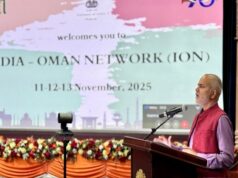The Indo-Sri Lanka Accord signed 38 years ago was a major diplomatic blunder, one India could have done without. The agreement signed by then PM Rajiv Gandhi and Sri Lankan President JR Jayawardene on July 29, 1987 led to the deployment of the Indian Peace Keeping Force (IPKF) to resolve the ethnic violence in the island nation.
That was by far the largest foreign deployment of Indian troops abroad. And it ultimately turned out to be one of the bloodiest episodes in India’s military history, with over 1100 troops laying down their lives in the line of duty.
The accord pleased neither the majority Sinhalese nor the minority Tamils. The former saw it as a sell-out to India. The Tamils, who initially saw some hope, later turned hostile towards the Indian forces.
One incident turned the Liberation Tigers of Tamil Eelam (LTTE) against the IPKF, says Col. Yash Saxena (Retd), who, as Second Lieutenant, was part of the IPKF.
About 13 Tamil insurgents who were captured by the Sri Lankan army killed themselves while in custody but the LTTE blamed the IPKF for not preventing the incident. That was when LTTE chief Prabhakaran said it was time to “fight our own war and not depend upon India”, recalls Col. Saxena (Retd). The assault was then directed at Indian troops.
How The LTTE Operated
The group practised unconventional warfare. They didn’t believe in copybook styles; rather moves and strategy were tailor-made for a particular operation, says Col. Saxena (Retd). “Guile and surprise were their biggest weapons.”
High Motivation
Fighting for a separate Tamil motherland was the trigger for a high level of motivation. The insurgents knew they were fewer in number and up against a regular army that had more firepower. And if a person has a cyanide capsule around his neck, that’s indicative enough of being prepared to lay down one’s life for the cause.
Optimal Use
For the insurgents, maximum usage of existing resources was a given. They used the weapons or whatever they had very well, recalls Col. Saxena (Retd), citing an example. “An AK-47 rifle has 30 rounds of ammunition but they made it 31 by putting one in the chamber. Also, the trick of using two magazines at one time by strapping one to the opposite side of the other. These are things we learnt from them.”
How LTTE Tracked Indian Troops
Quite familiar with the terrain, the LTTE cadre used innovative methods to track the movement of Indian troops. “We had a typical smell to our bodies, given that we ate a particular type of food and rubbed the same kind of oil, quite different from what Tamils use. That’s what we learnt after we caught a few insurgents,” said Col. Saxena (Retd).
Invaluable Lessons
In a reversal of tactics, the Indian troops then started rubbing fish oil, similar to what the insurgents did. They also didn’t wear jungle shoes to avoid detection due to the markings left by the footwear.
The tactics learnt there from 1987-1990 came in handy. Those years of deployment were sort of a ‘nursery’. “We learnt how to fight guerrilla as guerilla.”
Nitin A. Gokhale is a media entrepreneur, one of South Asia's leading strategic affairs analyst and author of over a dozen books so far on military history, insurgencies and wars.
Starting his career in journalism in 1983, he has since led teams of journalists across media platforms.
A specialist in conflict coverage, Gokhale has covered the insurgencies in India’s North-East, the 1999 Kargil conflict and Sri Lanka’s Eelam War IV between 2006-2009.
Gokhale now travels across the globe to speak at seminars and conferences, and lecture at India’s premier defence colleges. He has founded three niche portals, Bharatshakti.in, stratnewsglobal.com and Interstellar.news.




